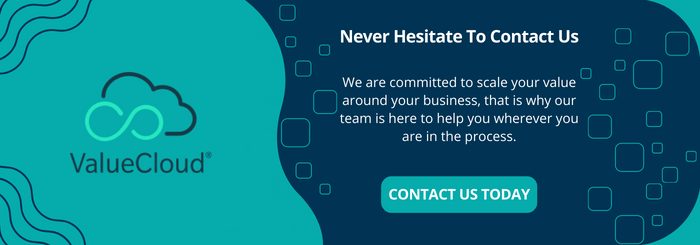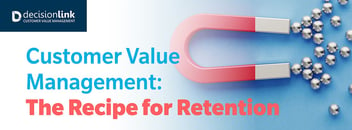Best Practices to Increase Customer Retention

Many businesses focus on customer acquisition strategies to raise their profits. However, customer retention often leads to a higher return on investment (ROI). It costs businesses five times more to acquire a new customer than keep an existing one. When your organization develops methods to increase customer retention, you grow a loyal customer base that positively spreads the word about your company and yields a better bottom line.
Specifically, customer retention refers to a company’s ability to retain existing customers over time. Usually, companies will incorporate several customer retention strategies that strengthen customer relationships and satisfaction to bring a longer customer lifetime value. These strategies emphasize the customer experience, ensuring it is seamless and provides high value.
This guide will cover how to successfully implement customer retention tactics for your company.
Measuring Customer Retention
It’s first important to measure where your customer retention stands now to improve your customer retention.
Customer Retention Rate
Your customer retention rate informs you how long your customers remain with your company after a designated period. Calculating your rate gives you concrete data on which to base your future customer retention strategies.
To calculate the customer retention rate, you will need three pieces of information:
- The number of customers at the start of a designated period (i.e., one month or one quarter)
- The number of customers at the end of that same period
- The number of customers gained during that period
After identifying these customer retention metrics, you can complete the customer retention rate calculation:
- Subtract the number of customers at the end of the period by the number of customers gained.
- Take that number and divide it by the number of customers at the beginning of the period.
- Multiply that number by 100, and you have your customer retention rate.
Customer Churn Rate
Your customer churn rate is the number of customers who no longer do business with your company. Calculating your churn rate will give you insight into where your products or services begin to lose value to your patrons.
To calculate your churn rate:
- Divide the number of customers you lost by the total number of customers you have in a given time period.
- Multiply that by 100 to get a percentage.
Customer Lifetime Value
Finally, your customer lifetime value will shed insight into your customers’ worth. This can help you predict revenue and determine your budget to engage customers. To calculate your customer lifetime value, add the average transaction size, the average number of purchases, and the average period of retention of customers to generate your rate.
How to Increase Customer Retention
The below customer retention practices are some of the most commonly used by highly successful companies.
1. Gather Customer Feedback
Customer feedback is invaluable to your company and your customers. With feedback, you can learn about areas of improvement for your company and understand what is working well for you. For current customers, asking for feedback demonstrates that you are invested in your company’s growth and are interested in what they have to say.
You can collect customer feedback by sending out questionnaires or surveys through email. After you’ve collected the feedback, you can analyze the information and data to see if there are any recurring patterns or trends. Following this, you can share the feedback with relevant departments to plan the next steps for improvement.
2. Provide Exceptional Customer Support
Of customers, 91% will not return to a business following a bad customer experience. Therefore, it’s essential to deliver customer service that is fast, efficient, and friendly. Having multiple channels open for support ensures that all needs are met.
Channels to have open include:
- Chat
- A phone line
- An email contact
- Social media response options
3. Showcase Your Full Value
Optimum customer retention is value realization. Value realization occurs when a customer interacts with a company and its products and services and understands the full potential value they offer them.
When customers understand value, they are more likely to become regular users of your product or services and, therefore, are easier to retain.
You can measure your value by assessing key performance indicators (KPIs) such as ROI and how long it takes the customer to make purchases regularly.
4. Increase Your Communication Efforts
Consistently engaging with customers keeps their interest and provides them with more opportunities to learn about your company. A highly effective engagement strategy is to launch email marketing campaigns. You can send:
- Welcome emails to new customers
- Thank you emails to frequent customers
- Email newsletters that update subscribers on new products, services, or company events
5. Delight and Surprise Customers
Demonstrate your appreciation toward customers by exceeding their current expectations and surprising them. Many successful companies send gifts such as coupons for a free product or service for a customer’s birthday.
Alternatively, you can use more traditional methods and send a personalized, handwritten note thanking customers for their business. Taking this extra initiative shows dedication to your customers, bringing loyalty from them.
6. Offer Loyalty Incentives
Loyal customers make repeat purchases, delivering a steady profit for your company. However, building loyal customers takes nurturing and more often than not, incentives. To open the path to loyal customers, consider launching a loyalty customer retention system. A common example is to reward customers points for every purchase, leading to special offers and discounts down the road. As a business, you can receive invaluable data on customer purchase behavior to understand which of your products and services brings the most success.
Customer loyalty programs also allow you to incorporate personalization into your customer experience. For example, you can present personalized offers based on which products customers use the most from your company, tailoring their experience and leading to an increased desire to continue buying from you.
7. Leverage Your Online Presence
Having a strong online presence is essential for all businesses today. Your online presence consists of your website and social media pages. If these channels aren’t updated and easy to use, customers may lose attraction to your offers or your company as a whole. Moreover, any problems they face on these channels may lead to customer complaints or negative feedback and a drop in customer retention. Lastly, it’s also a less expensive customer retention cost for your company.
8. Optimize Automation
Tracking and analyzing customer data, information, and data, while necessary, is often time-consuming. Use automation tools and software to make the process quicker and more seamless. One of the most commonly used options is to use marketing automation software. With these programs, you can automatically send emails and messages on a schedule that works best for you and your customers.
Moreover, with these same automation tools, you can receive customer behavior reports to info you which email campaigns retain the most customer interest, such as:
- The number of email open rates
- Bounce rates
- Response rates
Best B2B Customer Retention Examples
The following B2B customer retention strategies act as ideal examples to gain inspiration from.
Strong Online Presence: Airbnb
Airbnb is an excellent example of a company that has mastered its online presence. The lodging online marketplace has a particularly effective social media strategy wherein the company regularly shares user-generated content across their social media platforms. Customers of the company share photos of their stay in Airbnb lodgings worldwide, with the company re-sharing these pictures and customer stories.
As a result, Airbnb users are invested in the company’s journey and the journey of other customers, too, turning them into loyal followers.
Personalized Loyalty Program: Starbucks
Over the years, Starbucks has developed an unparalleled loyalty program.
Customers who use the Starbucks loyalty program app can collect “stars” that lead to rewards such as free drinks and food. Moreover, the app offers personalized recommendations based on customers’ favorite orders. Customers are more likely to return to the store repeatedly to optimize their rewards.
In return, the company receives a trove of customer data and behavioral information that they can leverage to understand their customer lifetime value.
Exceptional Customer Experience: Apple
Apple has become a tech giant in the world because of its stylistic devices and its exceptional customer experience. The company quickly responds to customer inquiries about its products and additionally offers one-on-one in-store service to customers who need direct help with their products. Such dedication to customers proves that customer service is at the forefront of customer retention.
Build a Customer Retention Strategy
Customer retention is vital for providing a valuable customer experience that turns customers into loyal company advocates and spenders. The key to implementing a customer retention program is to decide which strategy works best for your company in decreasing customer churn and increasing customer lifetime value.
Use the above customer retention solutions to begin your retention process and use online tools and resources to find the most success. DecisionLink offers value-focused solutions for customer retention that set you up for success today and for your company’s future.

 ValueCloud
ValueCloud
.png?width=118&height=76&name=Rectangle%20(3).png) ValueCloud Ignite
ValueCloud Ignite
.png?width=92&height=92&name=Rectangle%20(4).png) Free Assessment
Free Assessment
.png?width=100&height=100&name=Rectangle%20(5).png) Watch a Demo
Watch a Demo
.png?width=82&height=96&name=Rectangle%20(6).png) Value Calculator
Value Calculator

.png?width=62&height=51&name=Group%2010%20(1).png) Marketing
Marketing
 Sales
Sales
 Customer Success
Customer Success
 Engage Prospects
Engage Prospects
 Win Deals Faster
Win Deals Faster
 Retain Customers
Retain Customers
.png?width=62&height=62&name=Rectangle%20(8).png) Adopt and Scale
Adopt and Scale
.png?width=54&height=54&name=Rectangle%20(9).png) Cybersecurity
Cybersecurity
 Healthcare
Healthcare
.png?width=54&height=54&name=Rectangle%20(10).png) IT & Software
IT & Software




